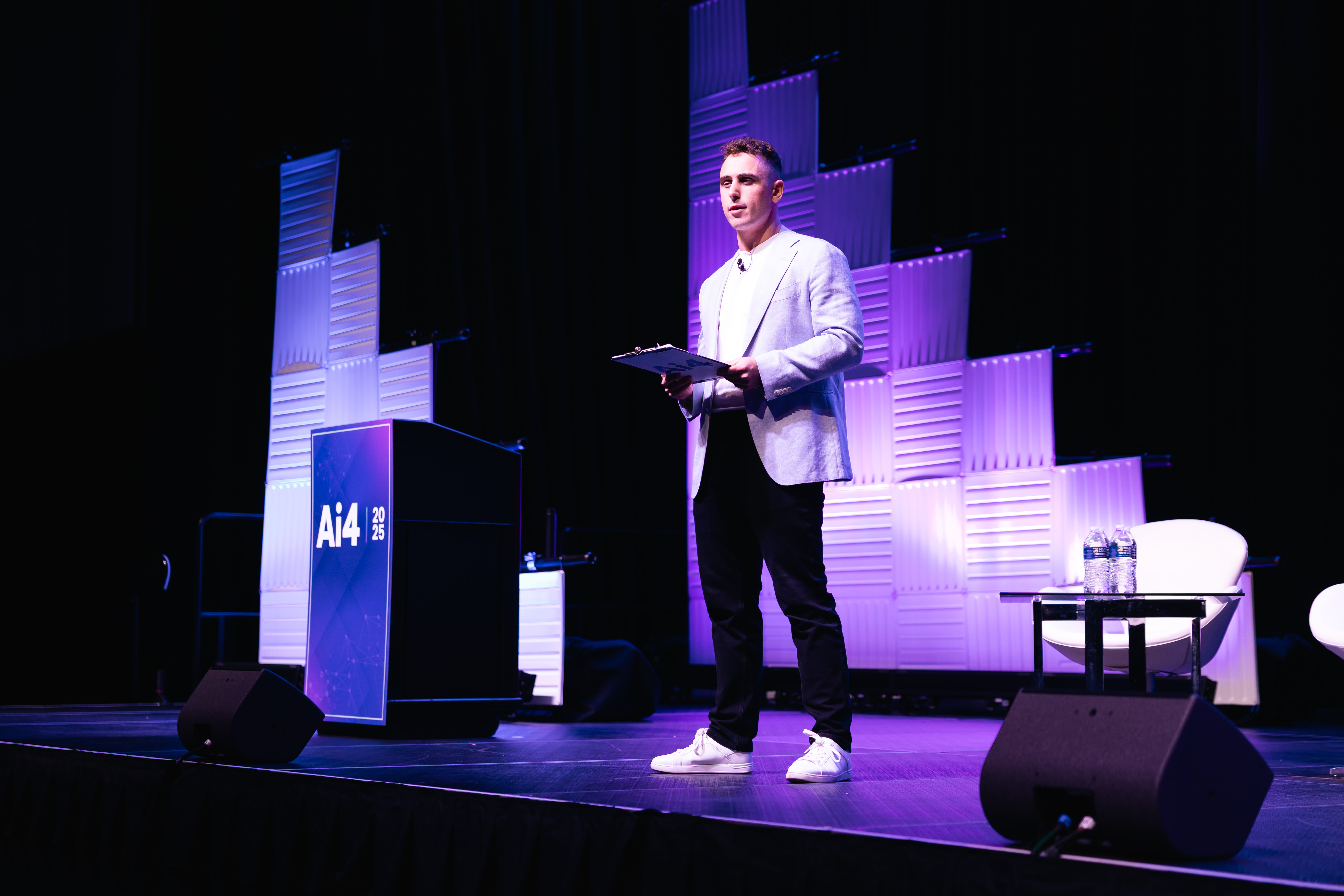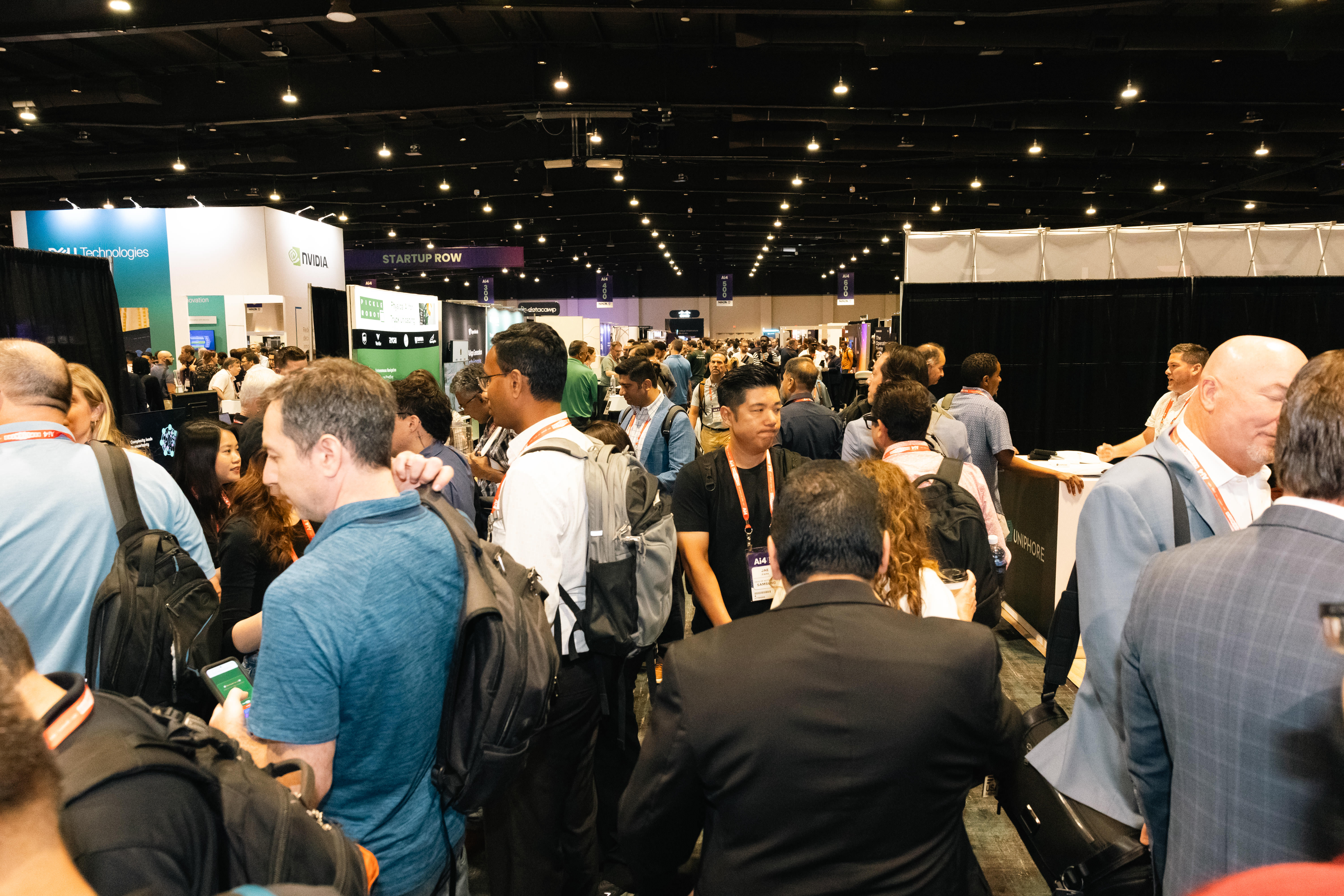Ai4 2025 Vegas Wrap-Up: What Enterprises Need to Know About Emerging AI Solutions
Ai4 2025 in Las Vegas "brought the AI heat," showcasing a wave of enterprise-ready AI innovations. IDN was on the ground at the show to learn more about new tech, cutting edge customer adoption and just overall great ideas for how to adopt practical AI for business needs and enterprise environments.

Ai4 2025 in Las Vegas "brought the AI heat," showcasing a wave of enterprise-ready AI innovations. The show highlighted surging investment in agentic AI, new platforms for operational automation, embedded finance solutions, and advanced AI infrastructure for developers.
More than 8,000 attendees learned how AI is rapidly moving from concept to practical deployment, with vendors demonstrations and customer case studies about automating workflows, integrating legacy systems, and accelerating AI adoption across enterprise environments.
Ai4 Announcements: What They Mean For AI-focused Organizations
1. EY: AI Investment Strong, but Agentic AI Adoption Trails
EY's latest AI Pulse Survey reveals a gap between AI investment and agentic AI adoption. While 70% of enterprises plan to increase AI budgets in 2025, only 15% have deployed mature agentic AI solutions. The report identifies barriers including unclear business use cases, integration challenges, and governance concerns.
Notably, the report said, "97% of senior leaders whose organizations are investing in AI are experiencing positive ROI across business functions," yet agentic AI adoption remains limited to narrow use cases, such as automated customer support or IT workflow orchestration. Many executives are still uncertain how to operationalize agentic AI safely and measure ROI effectively.
EY suggests adoption will accelerate when enterprises establish clear risk management, oversight, and measurable outcomes. Vendors offering practical guidance, integration support, and governance frameworks may see faster uptake, particularly in industries with high compliance demands or complex operations.
What it means: Enterprises are investing heavily in AI, but scaling agentic AI beyond pilot projects requires practical playbooks and oversight mechanisms. The research signals opportunities for solution providers to deliver enterprise-ready tools, integration support, and governance frameworks that bridge the gap between AI potential and operational deployment.
(ey.com)

2. MongoDB Strengthens AI Infrastructure with Models and Ecosystem
MongoDB unveiled enhancements aimed at AI-powered application development. Its Voyage AI line now includes voyage-context-3 for context-aware embeddings that do not require metadata or chunking, and voyage-3.5 and 3.5-lite for high-accuracy, cost-efficient general-purpose embeddings. The rerank-2.5 series allows developers to steer outputs using natural language instructions. The Model Context Protocol (MCP) Server, now in public preview, enables direct connectivity with tools like GitHub Copilot, Anthropic’s Claude, and Windsurf. Strategic partnerships with Galileo (observability), Temporal (workflow orchestration), and LangChain (agentic, explainable retrieval) further simplify AI application development.
What it means: MongoDB is positioning itself as a full-stack AI infrastructure provider. By integrating intelligent models, enhancing tool connectivity, and leveraging a growing partner ecosystem, it reduces complexity and accelerates production-grade AI applications.
(mongodb.com)
3. AI Goes Deeper Into Vertical Markets -- Lendflow Launches AI Automation Suite for Embedded Lending
Lendflow introduced an AI Automation Suite designed to help software companies embed and scale lending capabilities within their existing platforms. The suite leverages machine learning models to automate application decisioning, credit underwriting, and risk scoring, while AI-driven compliance checks help ensure adherence to regulatory requirements. Customer interactions—including status updates, notifications, and communications—are also automated, reducing manual effort. The platform integrates via APIs, allowing fintechs and software providers to offer embedded lending without building a full banking backend.
What it means: By combining intelligent decisioning, workflow automation, and integration tools, Lendflow simplifies embedded finance for software providers. This could accelerate the rollout of credit products, improve operational efficiency, and reduce compliance risk. Lendflow also brings focus to growing conversation that asks whether some industries might benefit from focused, smaller models – rather than use ‘one big beautiful’ model.
(lendflow.com)
4. Intellect Launches Purple Fabric to Streamline U.S. Banking Operations
Intellect Design Arena launched Purple Fabric in the U.S., an AI-powered integration and orchestration platform for financial services. Purple Fabric connects legacy systems, APIs, and third-party data sources, providing a unified framework for digital service deployment. It includes AI modules for onboarding verification, fraud detection, transaction monitoring, and predictive analytics. Low-code orchestration capabilities allow developers to automate end-to-end processes across multiple banking systems without extensive custom coding.
What it means: Purple Fabric enables faster digital service deployment in banking and fintech, helping firms integrate legacy infrastructure while maintaining compliance. Its AI capabilities also support smarter decision-making across customers and operational workflows.
(purplefabric.ai)
5. Swifter Launches Next Platform for AI-Driven Operations Management
Swifter introduced Next, its AI-powered platform that combines predictive analytics, anomaly detection, and workflow automation to optimize operations in industries such as telecom, utilities, and manufacturing. The platform ingests real-time operational data, applies machine learning models to detect inefficiencies or potential failures, and triggers automated workflows to prevent downtime or resource bottlenecks. Next also leverages AI-driven predictive models to continuously optimize workflows, providing actionable insights that help organizations anticipate bottlenecks, improve resource allocation, and enhance overall operational efficiency. It is architected to support hybrid cloud deployments and integrates with enterprise resource planning (ERP) and IT management systems.
What it means: Next allows organizations to leverage AI not just for insights but for proactive operations management. By automating detection and response, enterprises can reduce operational costs, improve uptime, and increase efficiency across complex environments.
(swifter.ai)
6. IBM Touts ‘Agentic’ AI Capabilities via watsonx
IBM’s “AI Agents” initiative, powered by watsonx, demonstrates autonomous agent capabilities, orchestrating workflows, interacting with APIs, and responding to real-time data with minimal human intervention. Prebuilt templates cover supply chain, customer service, and other enterprise processes. Agents use reinforcement learning and contextual reasoning to prioritize tasks and trigger actions across connected systems.
Watsonx integrates large language models, structured and unstructured data, and IBM’s automation tools to enable more intelligent decision-making. Governance, compliance, and explainability are built in, allowing organizations to monitor agent decisions and intervene when needed. Prebuilt connectors support ERP, CRM, and cloud-native systems, making it easier to deploy agentic AI across complex enterprise environments.
What it means: IBM’s watsonx-powered agentic AI offers enterprise-grade automation with customization for industry-specific tasks. By combining autonomous decision-making, monitoring, and integration capabilities, organizations can improve operational efficiency, reduce human workload on repetitive tasks, and maintain control over AI-driven processes.
(ibm.com)

Ai4 Highlights: Practical AI & Deployment Examples
Ai4 2025 highlighted how enterprises are advancing business-first AI adoption across multiple fronts—from agentic systems, operational automation, AI infrastructure and more.
The common theme is simple: Organizations want practical AI solutions that can deliver value quickly and be easily integrated with their valuable legacy assets. Here are just some takeaways from popular Ai4’s customer talks.
Insurance is going all-in on automation – Carriers like The Hartford and IMA Financial are using AI to underwrite policies, assess risk, and detect fraud—cutting turnaround times while staying compliant.
Manufacturing sees measurable ROI – Siemens and GE showed how predictive AI reduces downtime and improves yield, with clear bottom-line impact.
Healthcare is balancing speed with ethics – Medtronic and Aidoc are deploying AI for diagnostics and treatment planning, while actively managing patient safety and oversight.
How ops teams are scaling AI reliably – Dell, Red Hat, and NVIDIA are leading the charge in hybrid deployment, monitoring, and infrastructure optimization to minimize latency and increase control.
Retailers are stacking their cart with AI – Amazon, Kroger, and Dick’s Sporting Goods are exploring AI to personalize customer journeys, optimize inventory, and boost retention and customer satisfaction.
From retail and finance to healthcare, energy, and defense, Ai4 2025 showcased how AI is moving from pilot to production—delivering real ROI, smarter workflows, and strategic edge across industries. Ai4 2026 promises to shed more light on tech and best practices for practical AI and the next wave of enterprise-ready innovation at The Venetian, Las Vegas, August 4–6, 2026.






